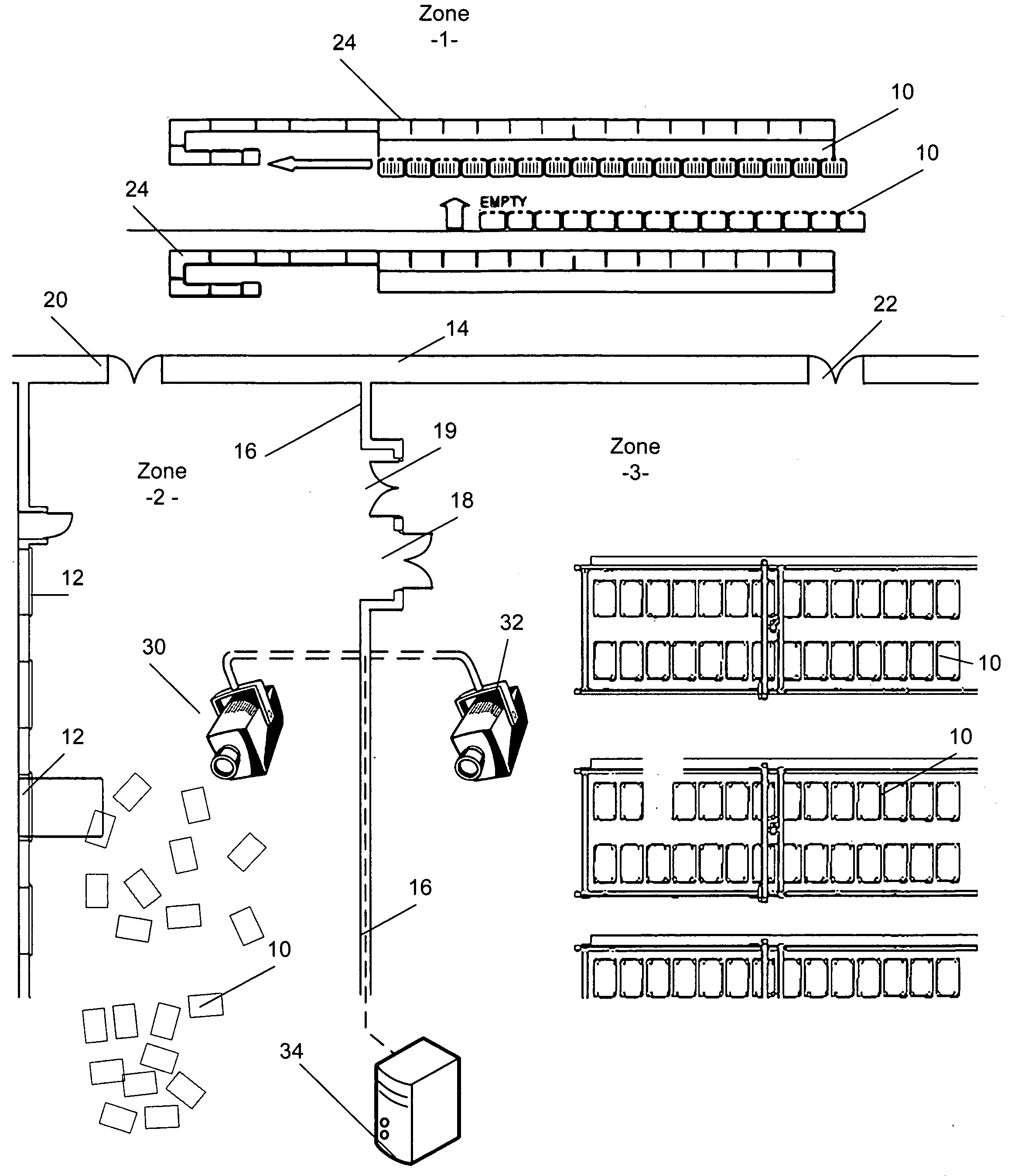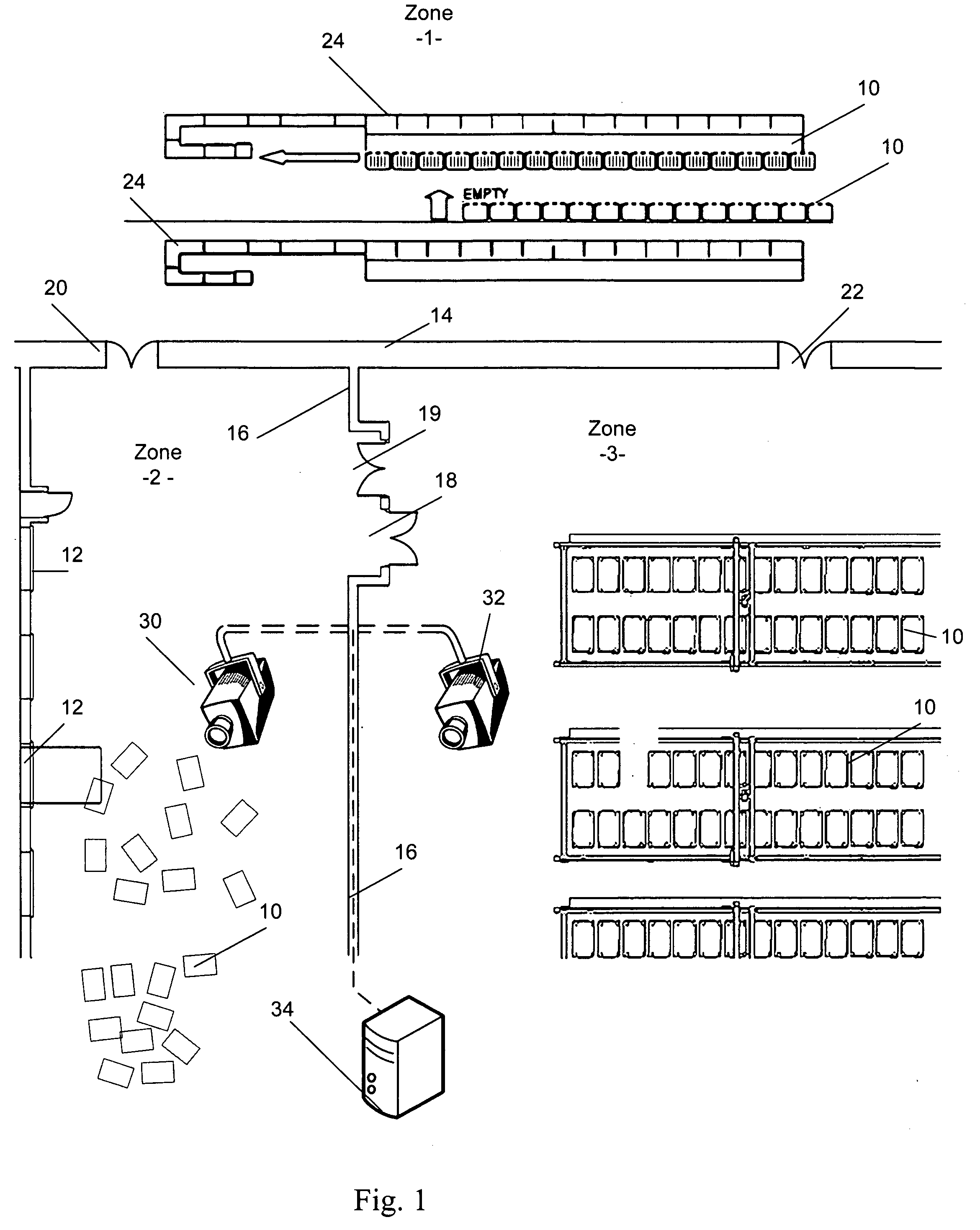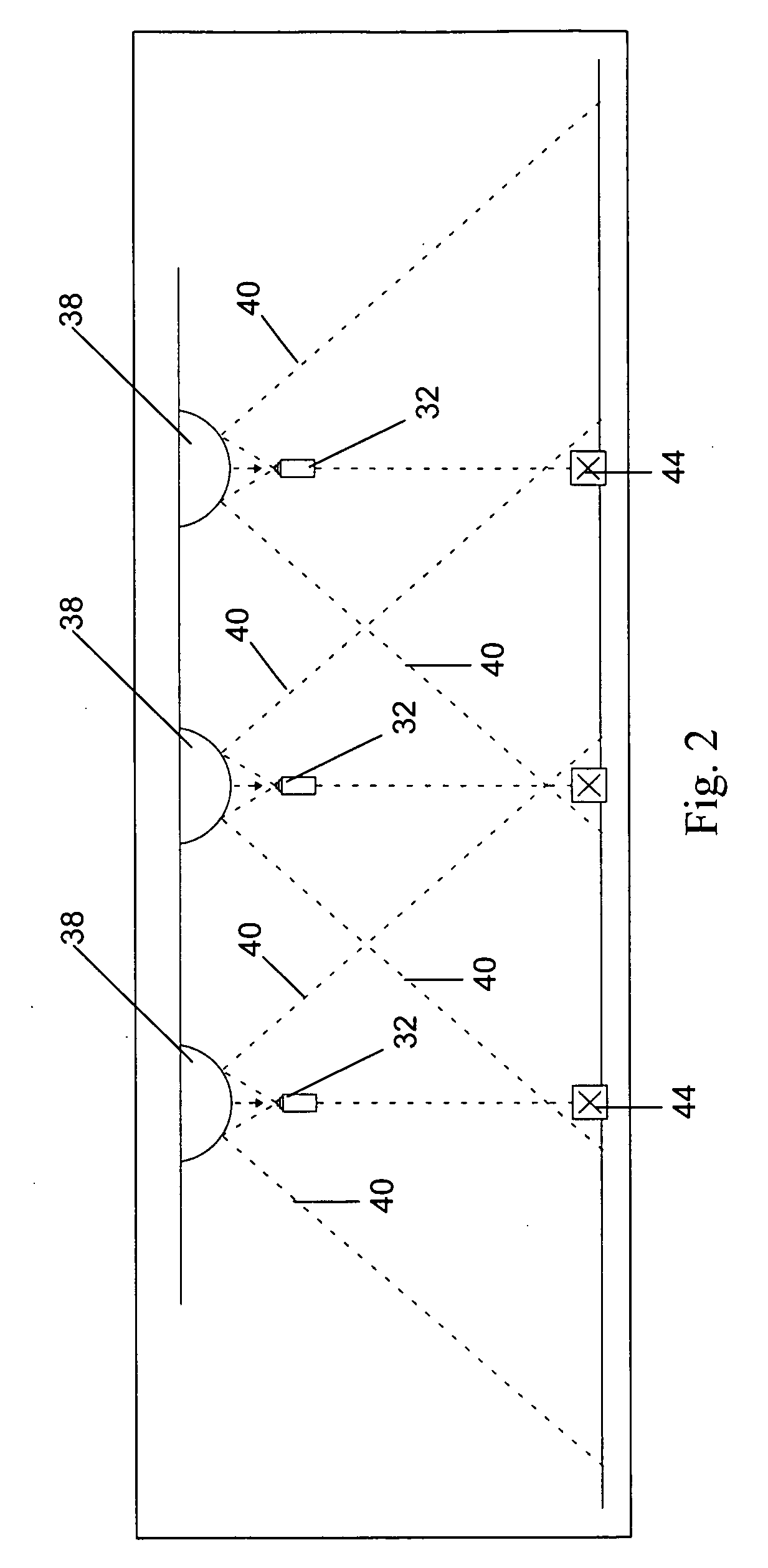Mail processing tracking system and method
- Summary
- Abstract
- Description
- Claims
- Application Information
AI Technical Summary
Benefits of technology
Problems solved by technology
Method used
Image
Examples
Embodiment Construction
[0019]Referring to FIG. 1, in a postal facility according to the invention, an tracking system is in place wherein RFID tags are being used to track mail pieces and / or mail transport carts or vehicles 10, and visual tracking is used to track cart positions as they are transported through predefined zones.
[0020]In the example of FIG. 1, zone 1 is an area wherein DBCS sorting machines operate. Zone 2 is a loading zone adjacent a series of loading docks 12. Zone 3 is an optional holding area in which loaded carts 10 are parked for storage and later retrieval. Zone 1 is separated from zones 2 and 3 by a partition wall, fence or barrier 14. Similarly, a wall, fence or barrier 16 separates zones 2 and 3. Wall 16 has an RFID gate 18 that reads the tags on carts 10 moving from zone 3 to zone 2. An optional exit gate 19 not equipped for RFID detection may be provided for return of empty carts. Wall 14 is shown with a pair of RFID gates 20 and 22, which lead to zones 2 and 3 respectively.
[002...
PUM
 Login to View More
Login to View More Abstract
Description
Claims
Application Information
 Login to View More
Login to View More - R&D
- Intellectual Property
- Life Sciences
- Materials
- Tech Scout
- Unparalleled Data Quality
- Higher Quality Content
- 60% Fewer Hallucinations
Browse by: Latest US Patents, China's latest patents, Technical Efficacy Thesaurus, Application Domain, Technology Topic, Popular Technical Reports.
© 2025 PatSnap. All rights reserved.Legal|Privacy policy|Modern Slavery Act Transparency Statement|Sitemap|About US| Contact US: help@patsnap.com



